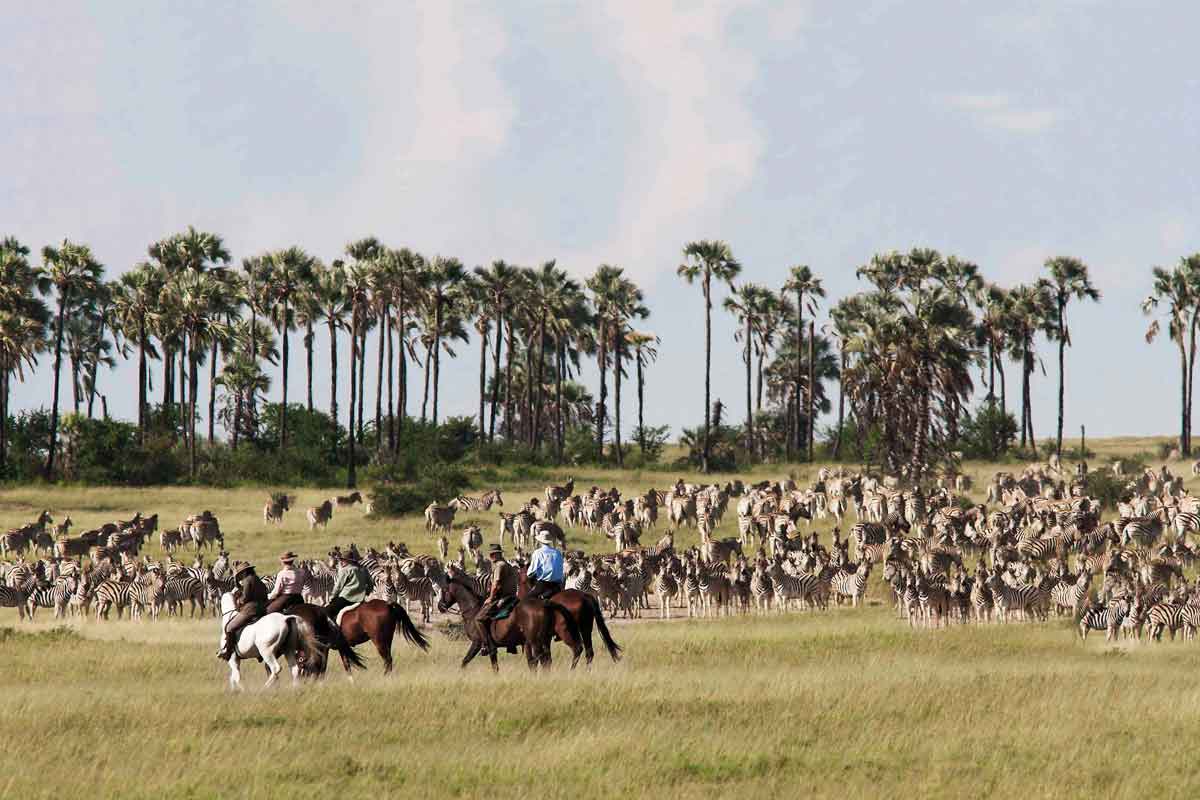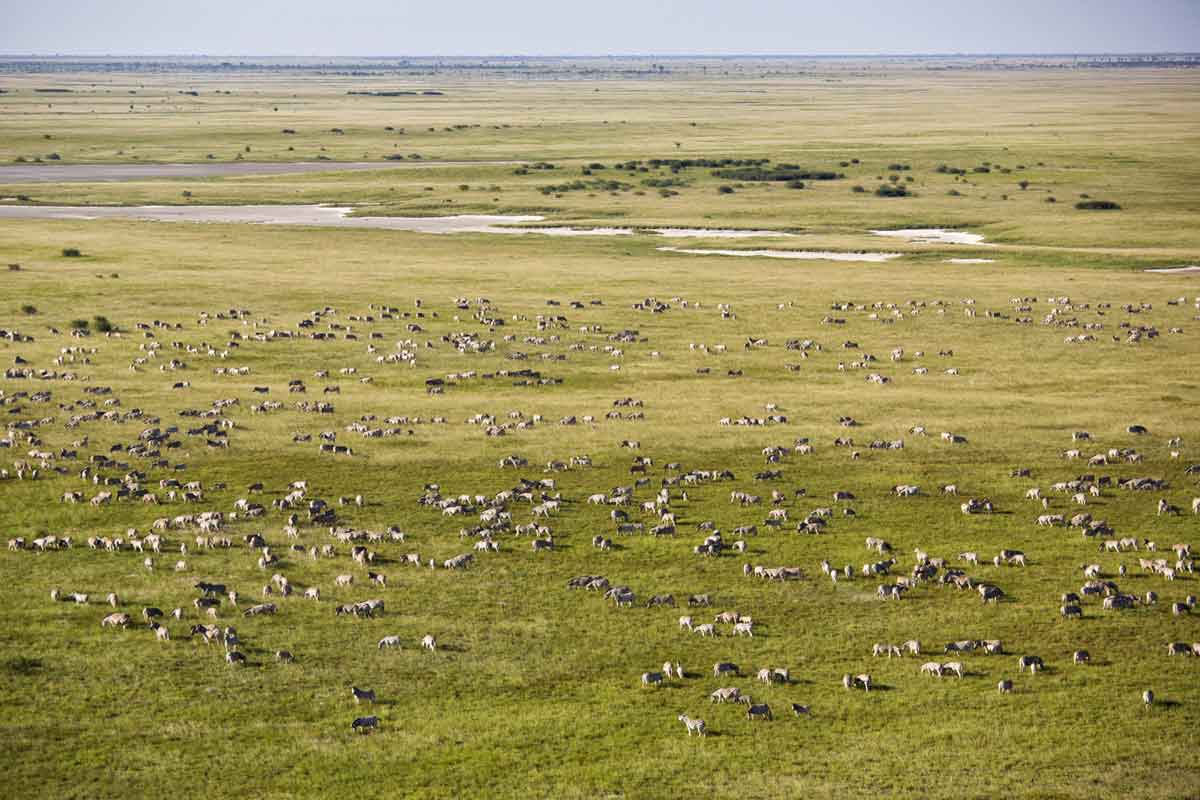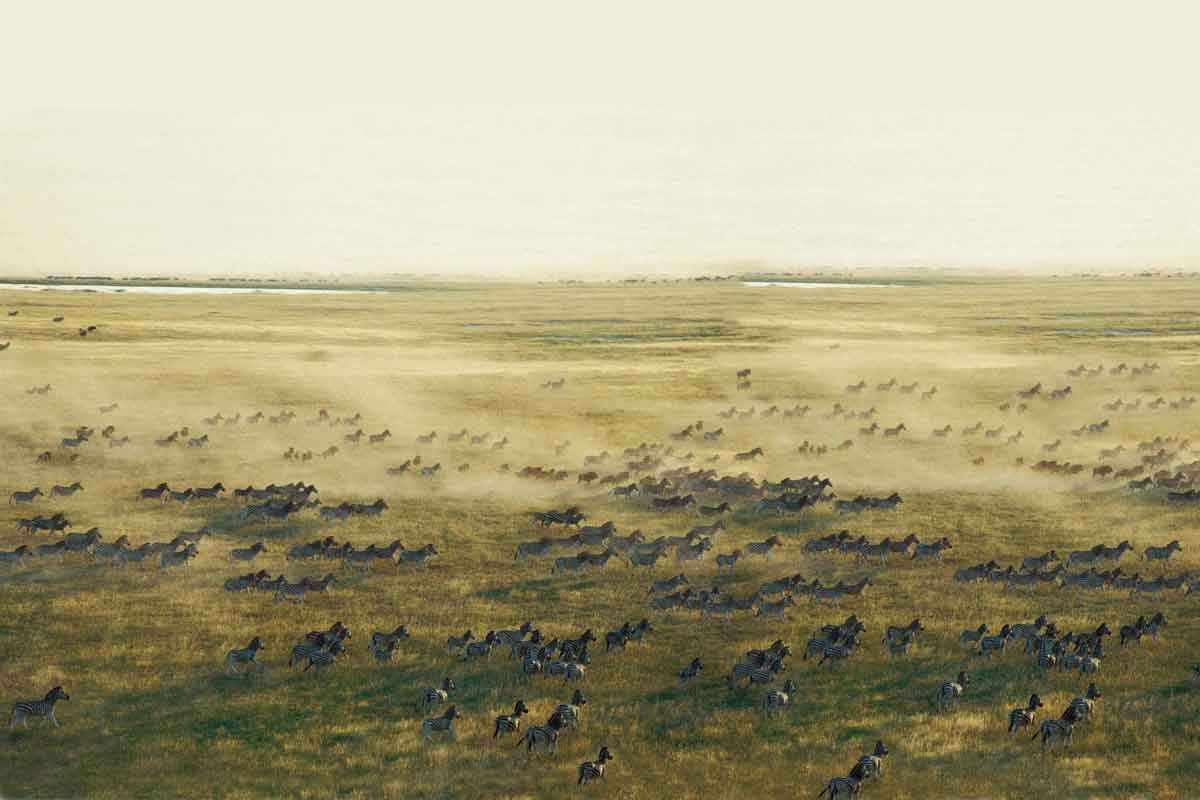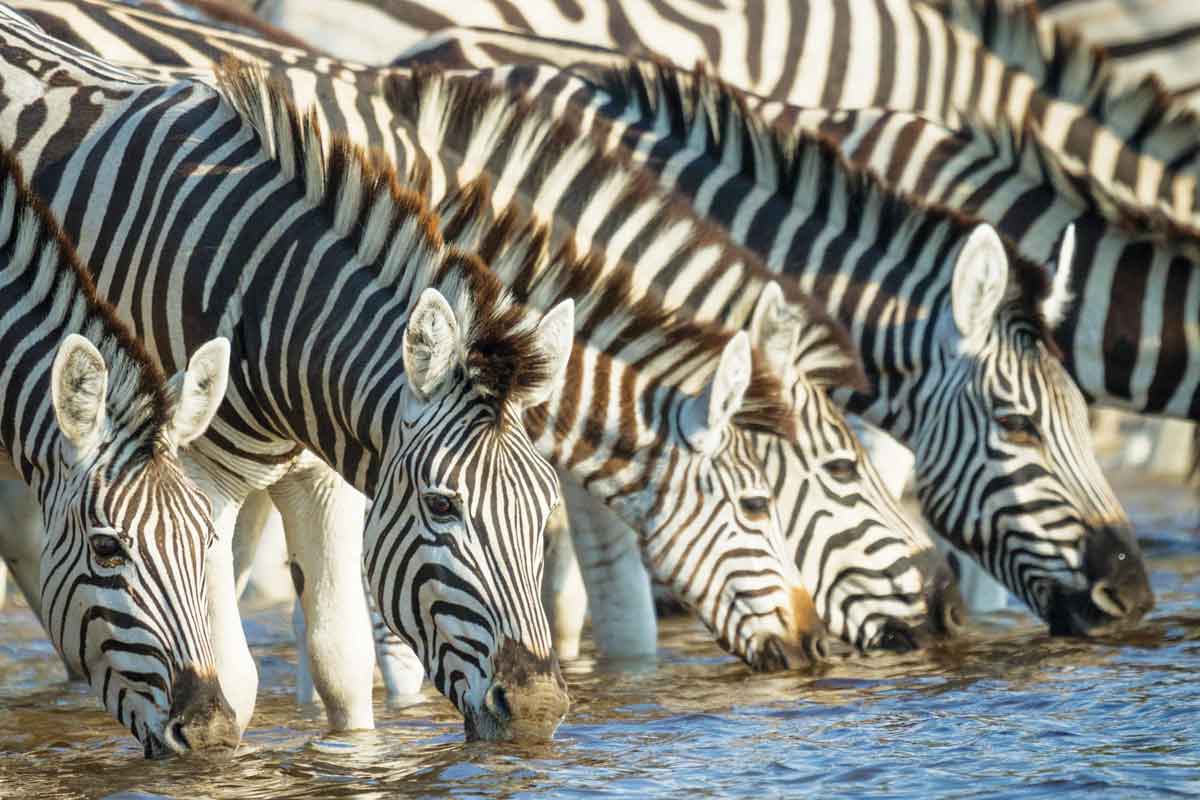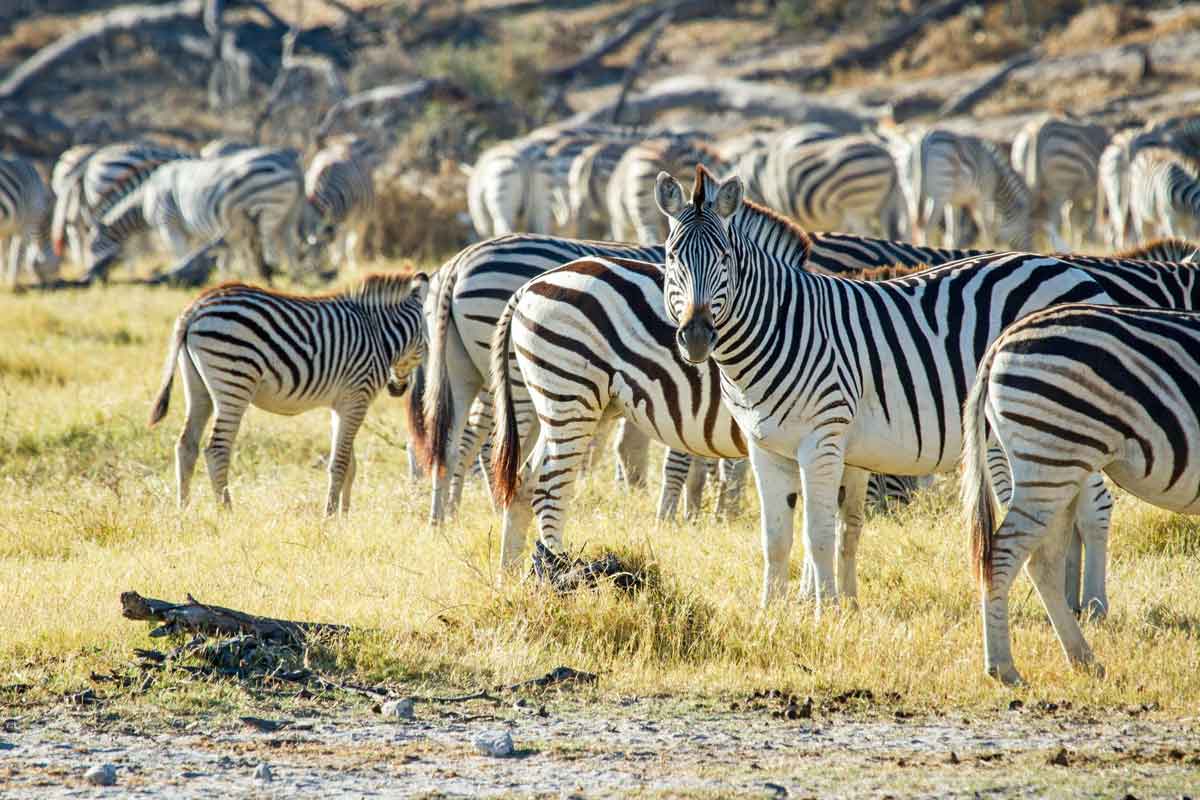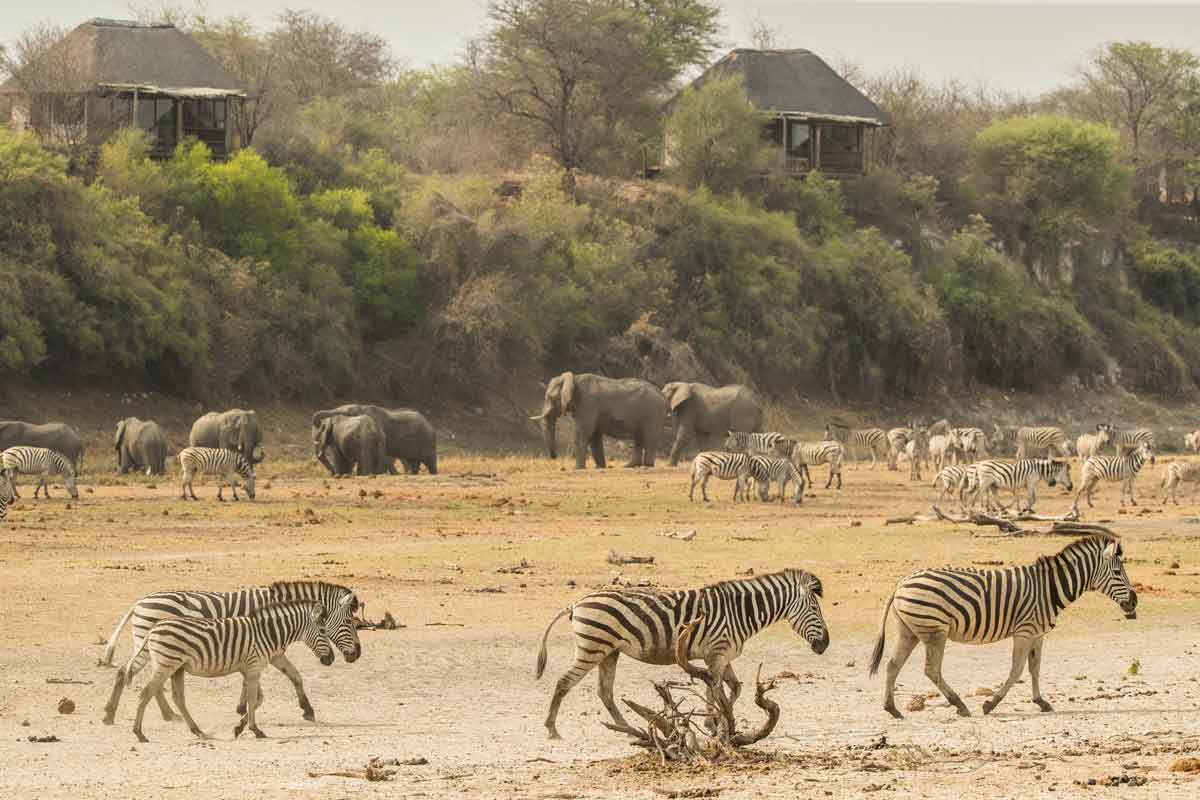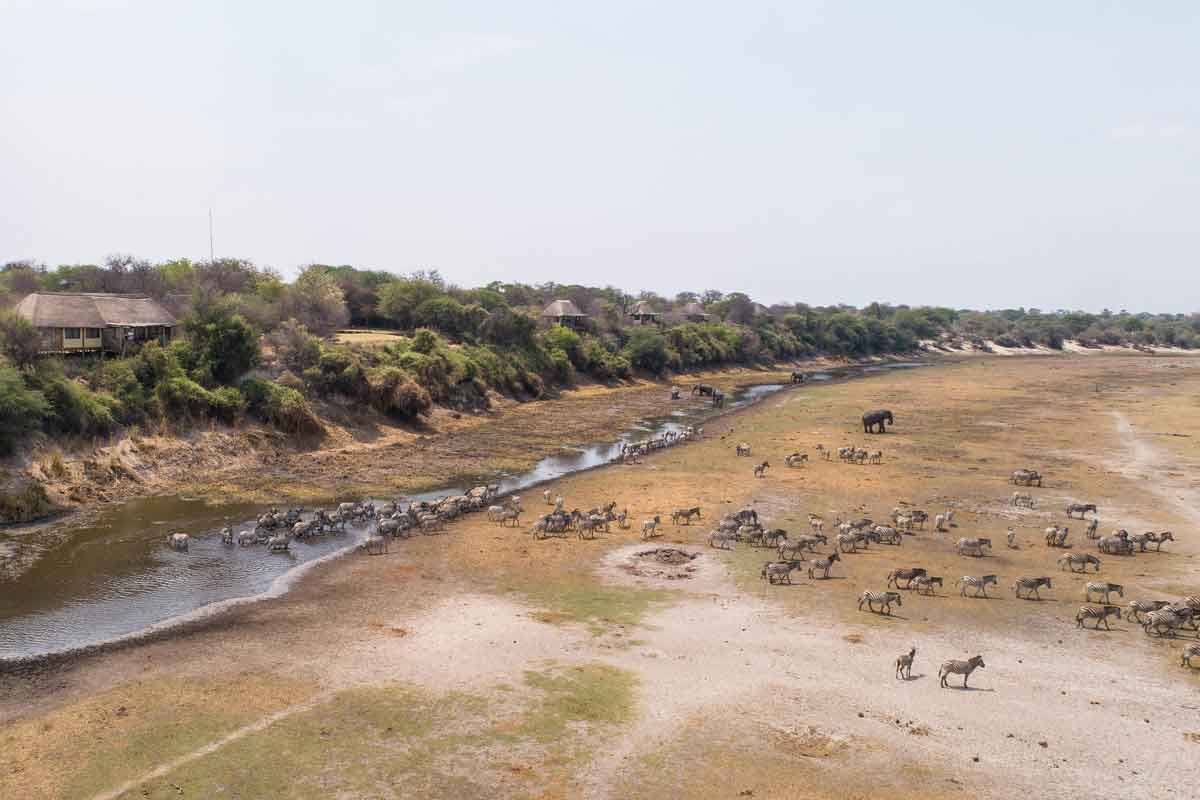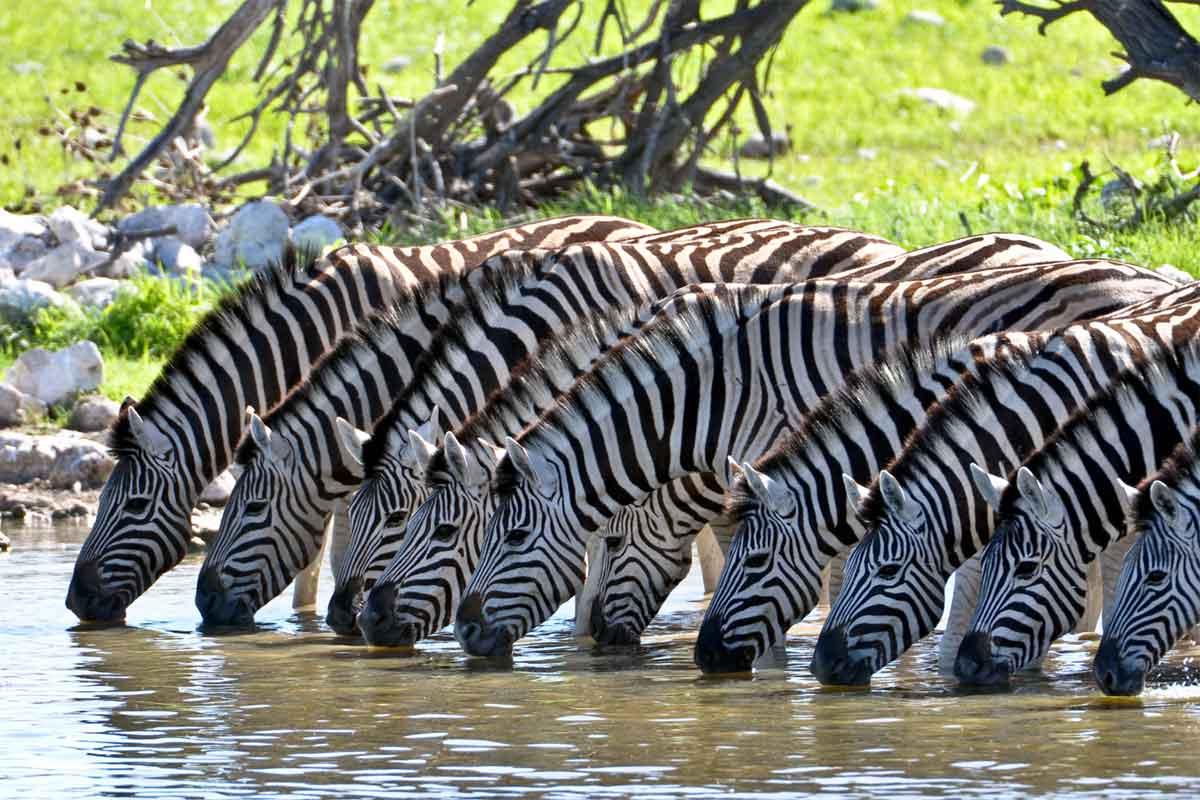The longest mammal migration
In years gone by the zebra migration rivalled the wildebeest migration in the Serengeti and Masai Mara ecosystem. Sadly, fences and farms cut off the ancient paths, diminishing the numbers dramatically. In 2004 the fences were removed, routes have been re-established and the herds now number over 30,000 individuals. It was at this time that scientists noticed the movement and started tracking the herds. Scientists from the WWF fitted female zebras with satellite trackers and were astounded by the results, with herds covering vast distances in a few short weeks in December.
The seasons in Botswana dictate when and where these animals moved to. Much of Botswana is dry Kalahari Desert, while the Okavango Delta and areas in the north are home to permanent water. The dry months are from May to October or November, which is the best time to visit the Delta. During these months the zebra herds are scattered across Chobe and Okavango and spend the driest months beside the river systems – the Chobe, the Kwando-Linyanti and the Okavango.
The green season in Botswana runs from December to late February or early March. This is the best time to see the zebra migration and it is lovely in the Okavango Delta, with the arrival of migratory birds and baby animals, with the bush a verdant green. It is a favourite time for photographers and returning safari goers.

